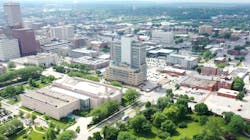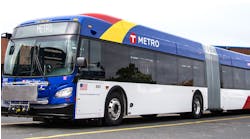Omaha Metro Transit (Omaha Metro) staff have been working throughout 2021 to plan future transit improvements through its initiative MetroNEXT, a year-long strategic planning and community engagement effort to develop strategies to enhance transit in the region.
Hundreds of public comments were received during the first round of outreach this spring. This feedback has helped guide Omaha Metro’s work, including the identification and screening of 15 corridors for potential enhanced bus service or ORBT expansion in the future.
Over the past few months, these corridors have been evaluated to assess the viability of transit enhancements and prioritize lines for further study. These screening factors included:
- The number of people, jobs and essential services along each line.
- The percent of low-income residents.
- The percent of minority residents.
- The number of residents with limited mobility due to a disability.
- The number of residents with limited or no access to a vehicle.
- How each line connects with the broader transit network.
- Walkability and pedestrian infrastructure.
- Speed and reliability opportunities.
- Ridership and existing travel patterns.
- Cost-effectiveness.
- Development potential.
- Right-of-way and parking constraints.
This technical screening process helped prioritize a top list of corridors for further study. Omaha Metro staff then met with dozens of community and civic organizations to gain additional insight and determine which line should be developed first.
This work has culminated in the selection of 24th Street as the next priority transit corridor.
The corridor, which runs from the North Omaha Transit Center near 30th & Ames to the MCC South Transit Center near 30th & Q via 24th Street, is currently served by Route 24, one of the most-used bus routes in the Metro system. In addition to the two transit centers, connections include 16 local bus routes, seven express routes, the Dodge Street ORBT line and dozens of community destinations along the corridor. The study area would also consider 30th Street as an alternative north of Dodge Street, with potential extensions at the north and south ends of the corridor.
Utilizing prior guidance
Numerous studies have recommended transit enhancements on 24th Street. Omaha Metro is able to build upon these previous efforts to design enhancements for the corridor. These studies include:
- North 24th Street Master Streetscape Plan
- City of Omaha 24th Street Corridor Study
- Housing Affordability Assessment (2021)
- Forever North (2020)
- 2050 Long Range Transportation Plan (2020)
- Transit Return on Investment Study (2020)
- Landscape Listening Report (2020)
- Transit Development Plan (2019)
- Close the Gap (2018)
- Metro Travel Improvement Study (2017)
- City of Omaha Master Plan
- Regional Transit Vision (2013)
- Joslyn Neighborhood Plan (2012)
- North Omaha Village Plan (2011)
- South Omaha Development Project (2010)
- Downtown Master Plan (2009)
- North Omaha Development Plan (2007)
Building upon history
24th Street has been a vital transportation corridor from the early days of Omaha’s history and public transit has served travelers on the corridor since a horse-drawn railway line began in 1874 – representing nearly 150 years of continual transit service in the area.
At its peak, a packed crosstown streetcar connected working-class neighborhoods on the near north side to jobs in the stockyards of South Omaha. This line was one of the most heavily utilized for the first half of the 20th century and one of the last to be converted to bus service as streetcar operation was discontinued throughout Omaha and Council Bluffs in the 1950s.
This rich history established a strong foundation for 24th Street as a transit-oriented community and many of the original buildings are still in place today. Compared to many other corridors throughout the region, 24th Street preserves the walkable, compact and historic neighborhood character that continues to make multimodal transportation popular among area residents.
Today, the 24th Street corridor is home to some of the region’s most economically disadvantaged residents. Many households in the area lack access to transportation due to physical or financial limitations, which can have profound impacts on health outcomes and quality of life. Enhancing transit along the 24th Street corridor is one step toward increasing accessibility and economic mobility for residents.
Connecting the region
The region will benefit from enhanced transit along the 24th Street corridor by providing fast, reliable, safe and frequent service with enhanced amenities along a line that connects North and South Omaha. This corridor offers access to many essential services including health care facilities, cultural destinations, educational services and support services.
Next steps
The selection of 24th Street as a transit priority corridor begins a multi-year process to coordinate and develop improvements and the timeline for implementation will depend on the level of desired infrastructure. Omaha Metro has begun seeking funding for a formal study of the corridor to compare potential designs including an enhanced bus route, upgraded amenities, or a new ORBT line.
More information will be shared as funding for the study is secured and Omaha Metro says it is eager to work with area businesses, organizations and residents to shape the future of transit on 24th Street.
Ongoing MetroNEXT efforts
A variety of additional transit improvements will be considered as MetroNEXT continues into the fall, including improvements to existing bus service, more frequent bus arrivals, upgrades to the fare payment system, better bus stops, clearer passenger information and new service types to connect the region.
More information will be shared as future rounds of engagement are scheduled this fall. Riders, local organizations and other community members throughout the region will help shape the final MetroNEXT Plan, which will guide Omaha Metro for years to come.


